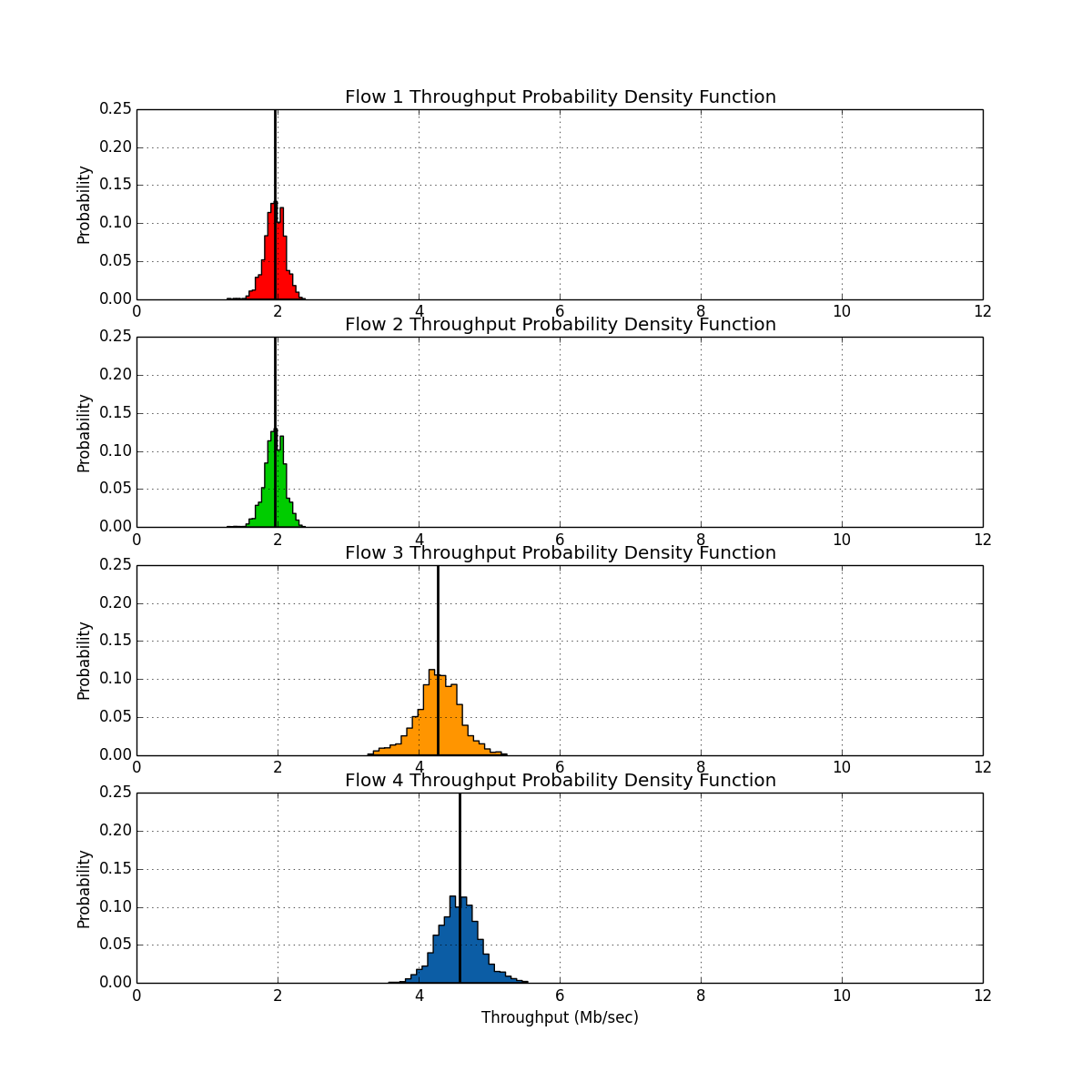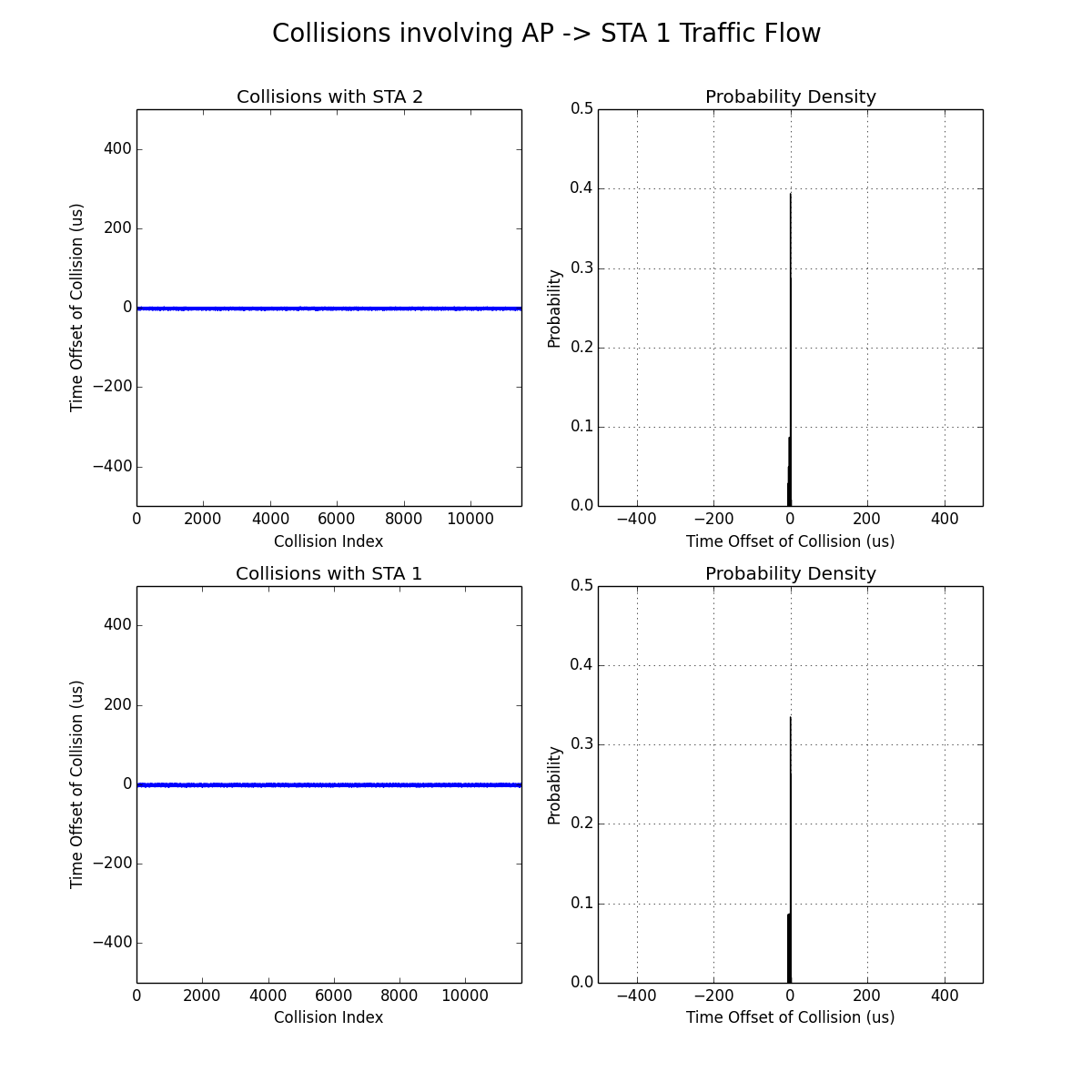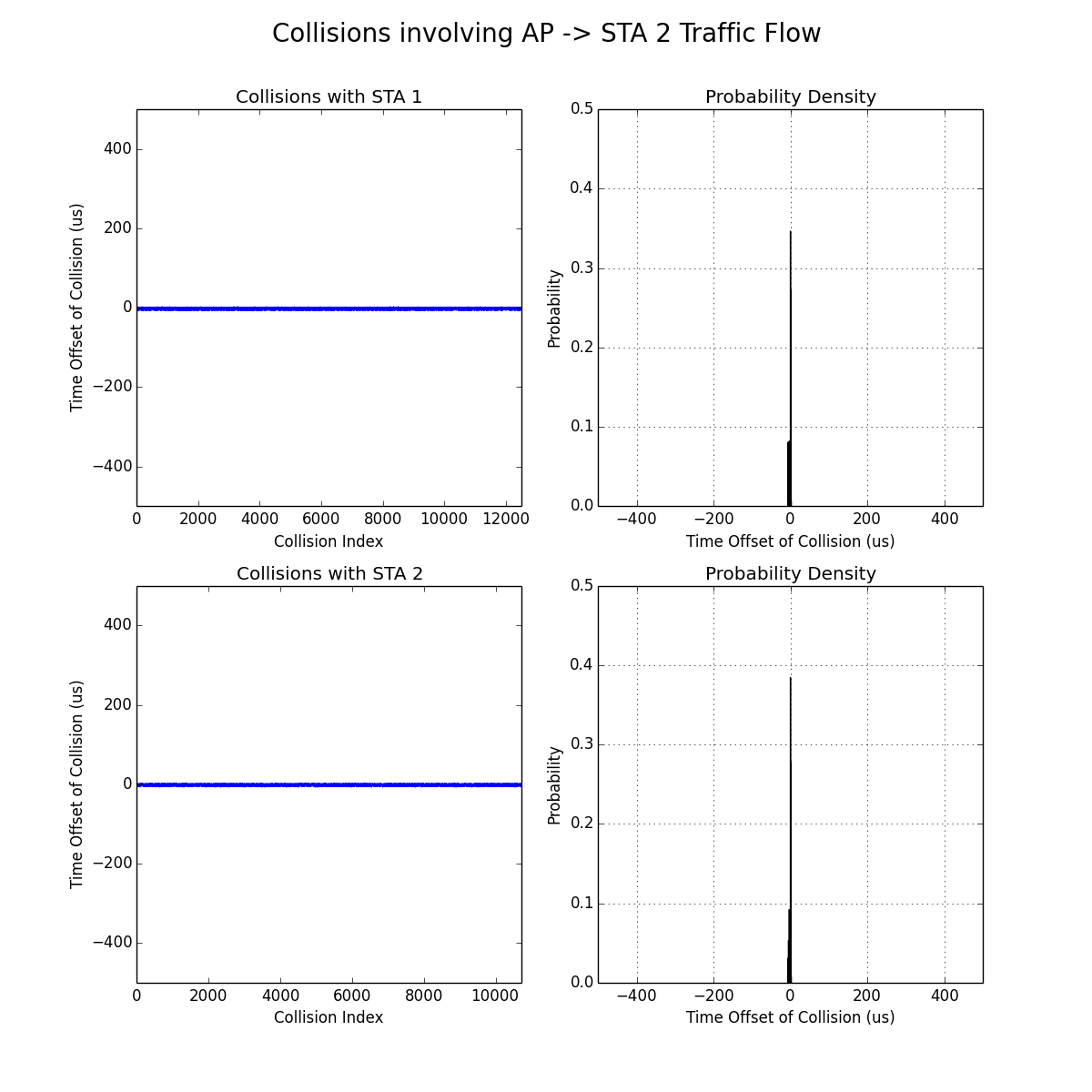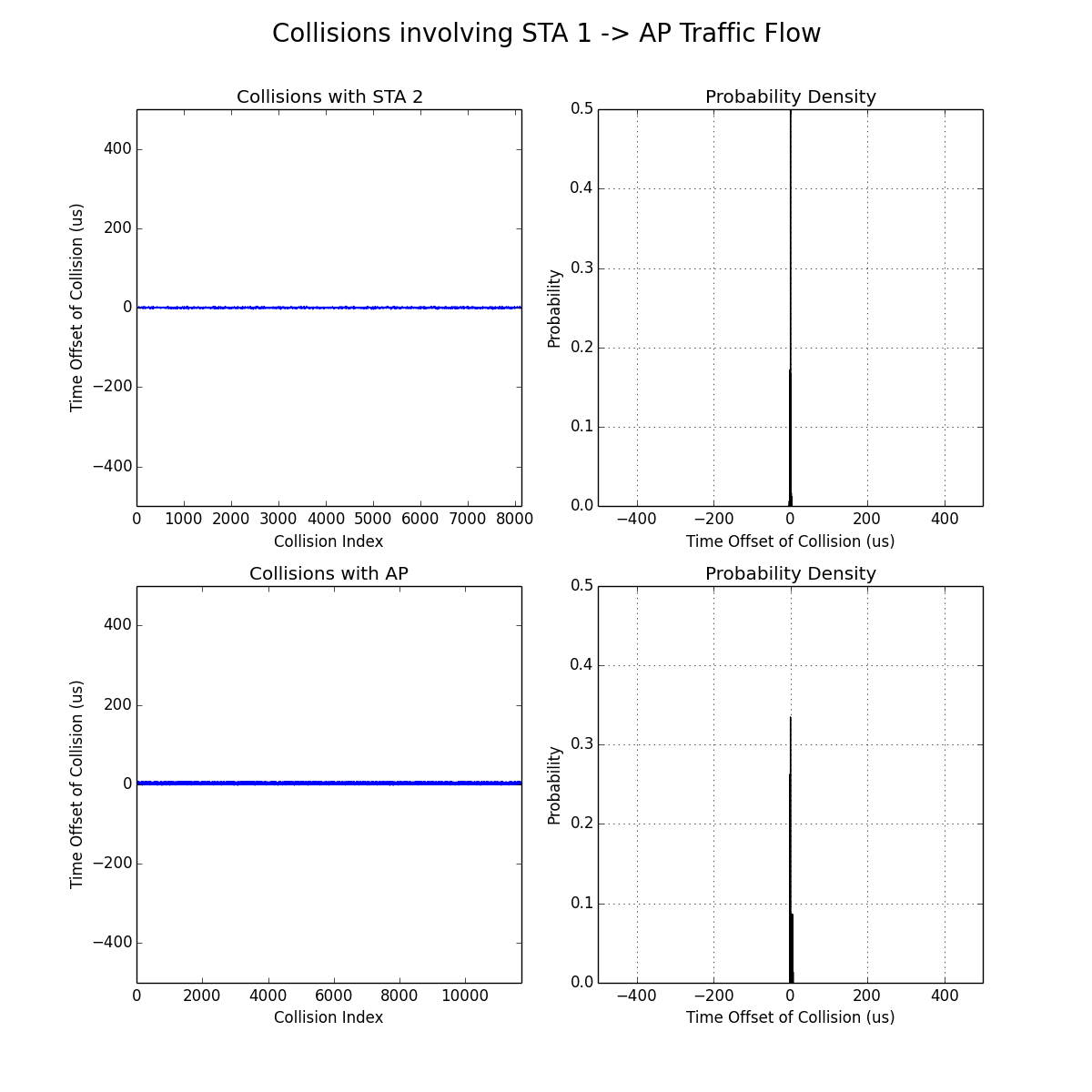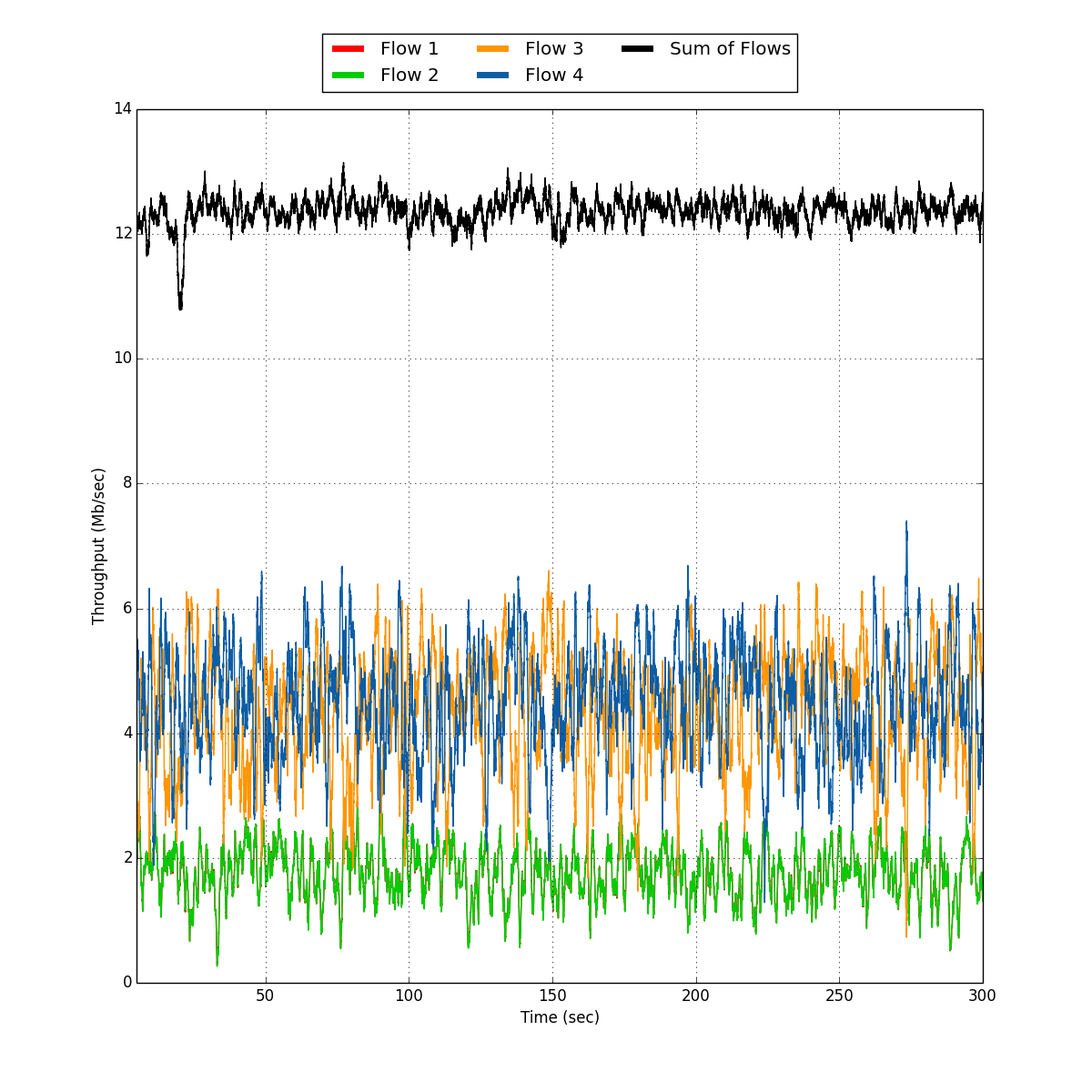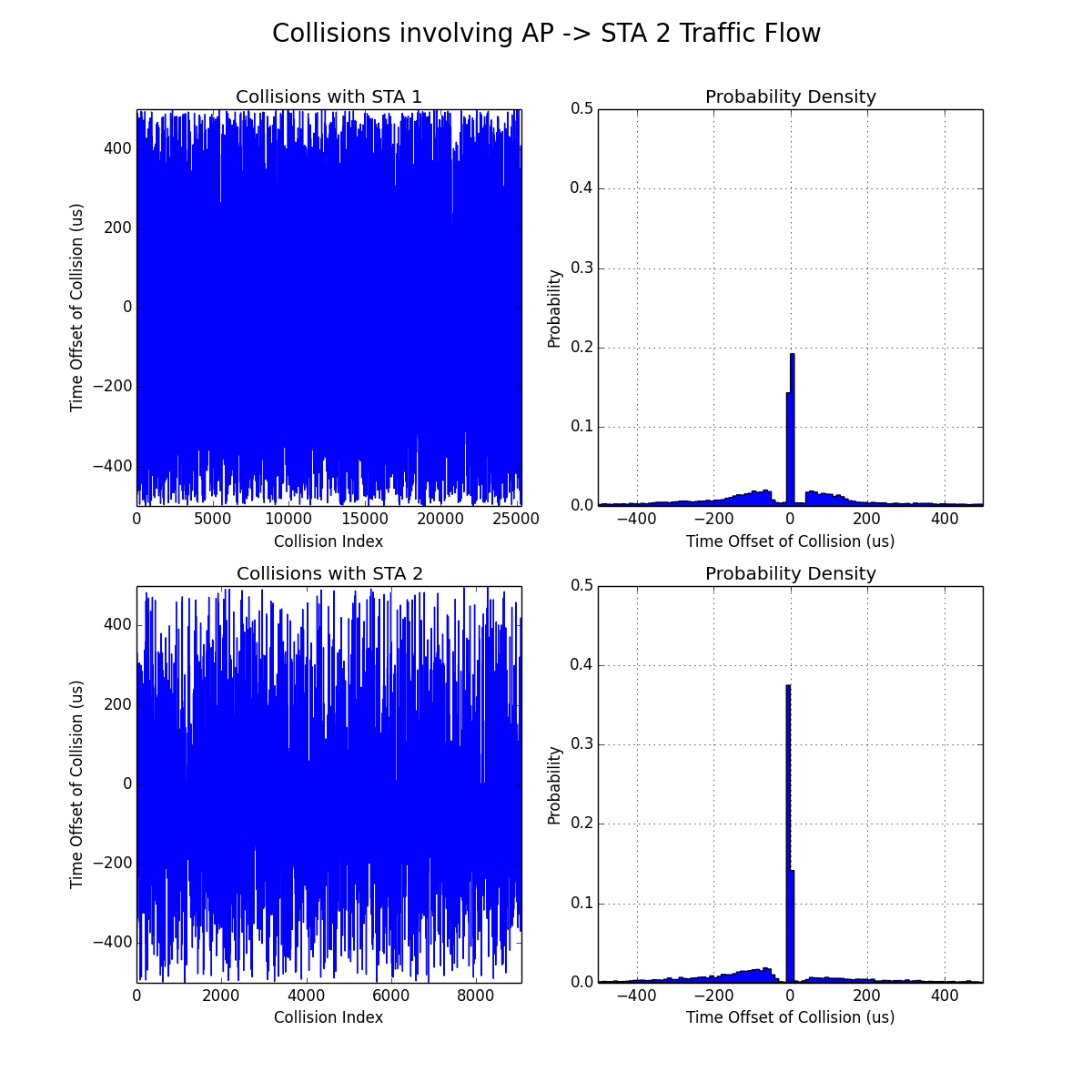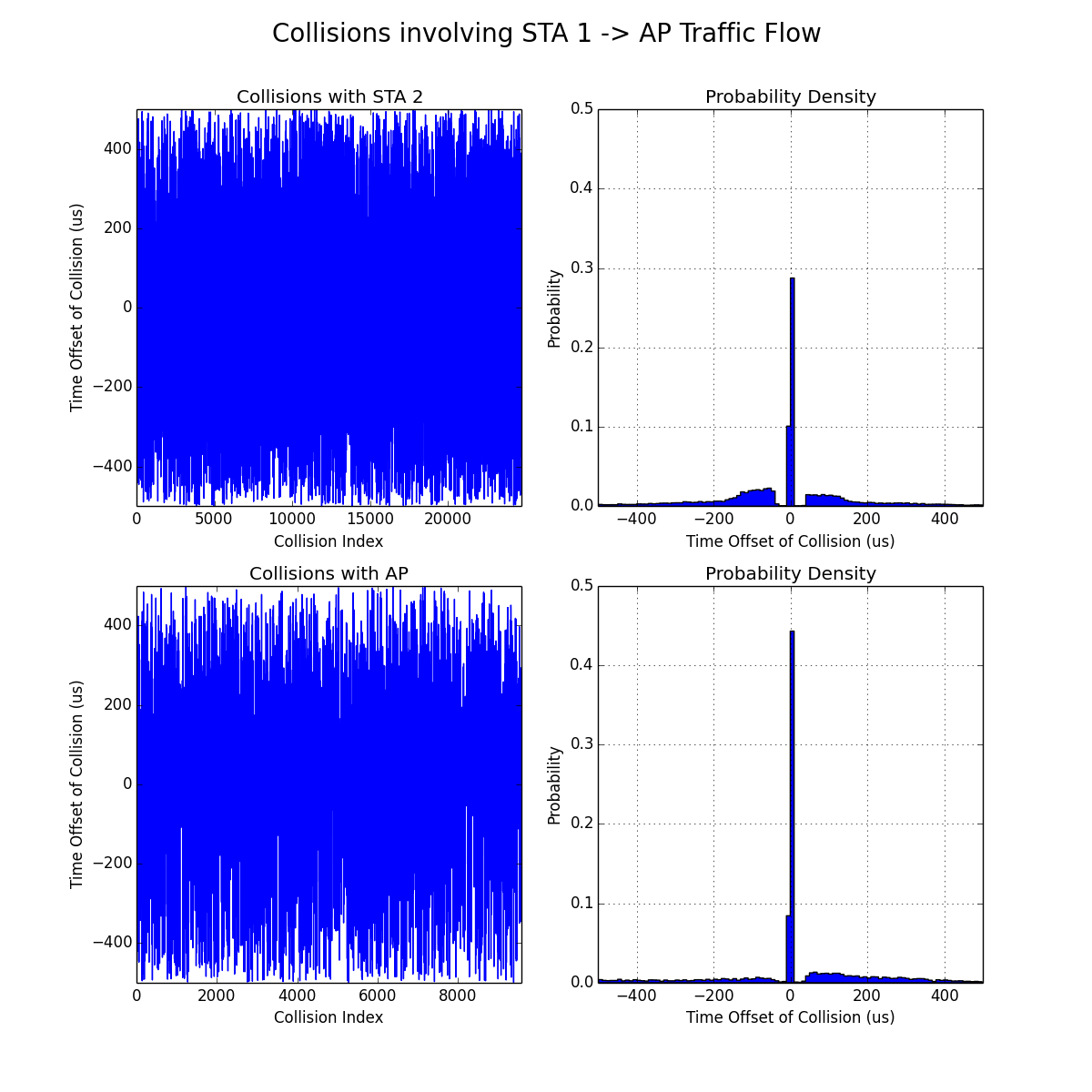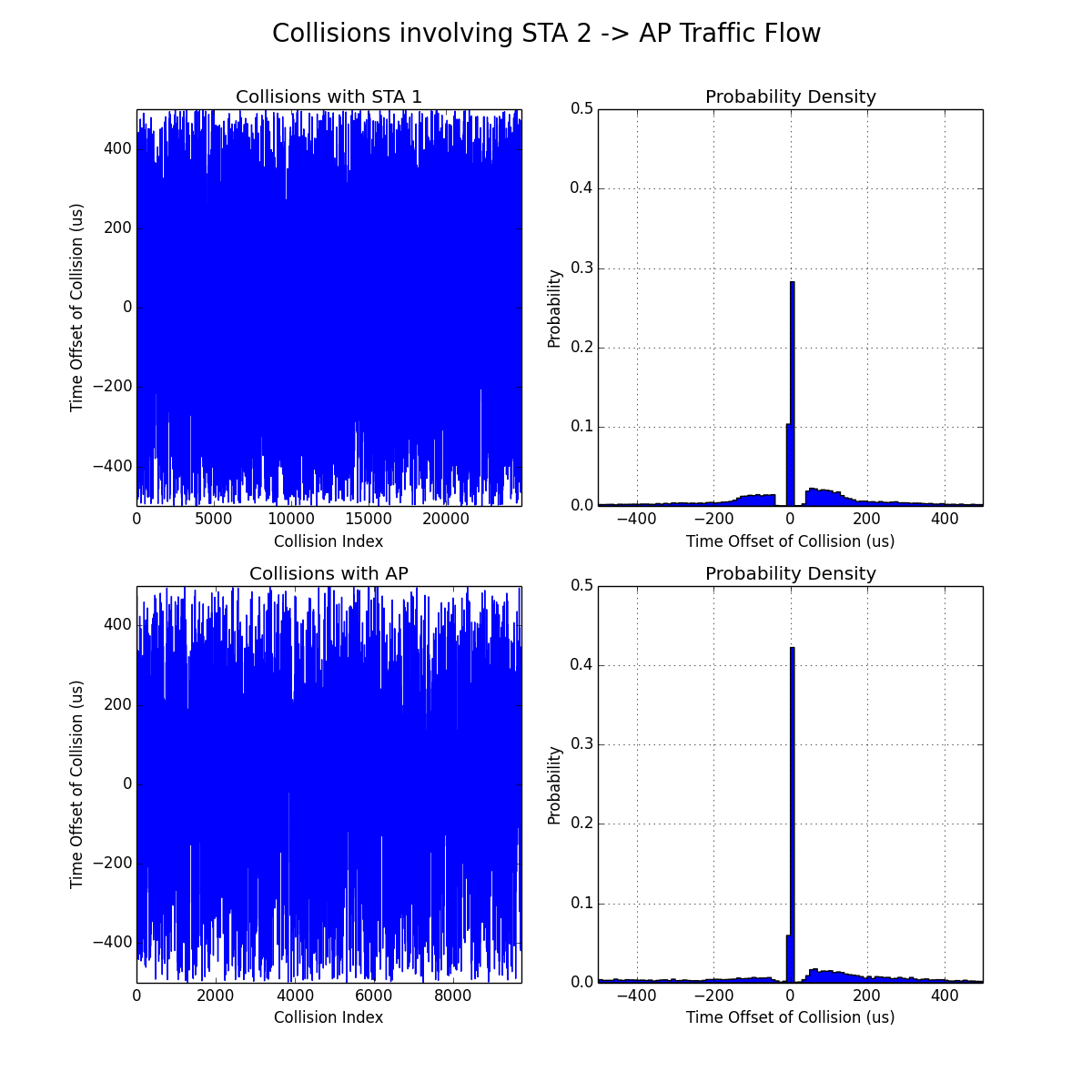Investigating Physical Carrier Sensing in the DCF with Multiple Traffic Flows
The purpose of the 802.11 Distributed Coordination Function (DCF) is to allow multiple traffic flows to contend for a shared wireless medium. In this application note we investigate how the Mango 802.11 Reference Design behaves when subjected to multiple traffic flows. This note provides a case study on how the design's experiments framework can be used to control and analyze the performance of 802.11 Reference Design nodes.
Experimental Setup
The experiments described below used 3 Mango WARP v3 kits, each running the 802.11 Reference Design (version v0.91).
Each node's RF interface was connected to an antenna with a toroidal pattern with 5dBi gain in all horizontal directions (L-Com RE07U-SM).
The nodes were indoors in a small office environment with limited mobility.

|
| Experimental Setup
|
We use 4 traffic flows in our experiments:
- Flow 1: Backlogged traffic from AP to STA_1
- Flow 2: Backlogged traffic from AP to STA_2
- Flow 3: Backlogged traffic from STA_1 to AP
- Flow 4: Backlogged traffic from STA_2 to AP

The colors in the figure above are used throughout this app note to denote each flow.
Experiment 1: Physical Carrier Sensing Enabled
The first experiment enables physical carrier sensing at all 3 nodes. This experiment highlights the expected behavior of the DCF in an environment with heavy contention for the medium.
Experiment Details
- Packet Length: 1400 byte payloads (1428 bytes OTA with MAC header and FCS)
- PHY Rate: 18 Mbps (QPSK, code rate 3/4)
- Tx Power: -5 dBm
- Trial Duration: 300 seconds
- 2.4GHz channel 1
- Physical Carrier Sensing Threshold: 250/1023 (approximately -70 dBm)
Results
| Throughput vs. Time | Throughput Histogram
|
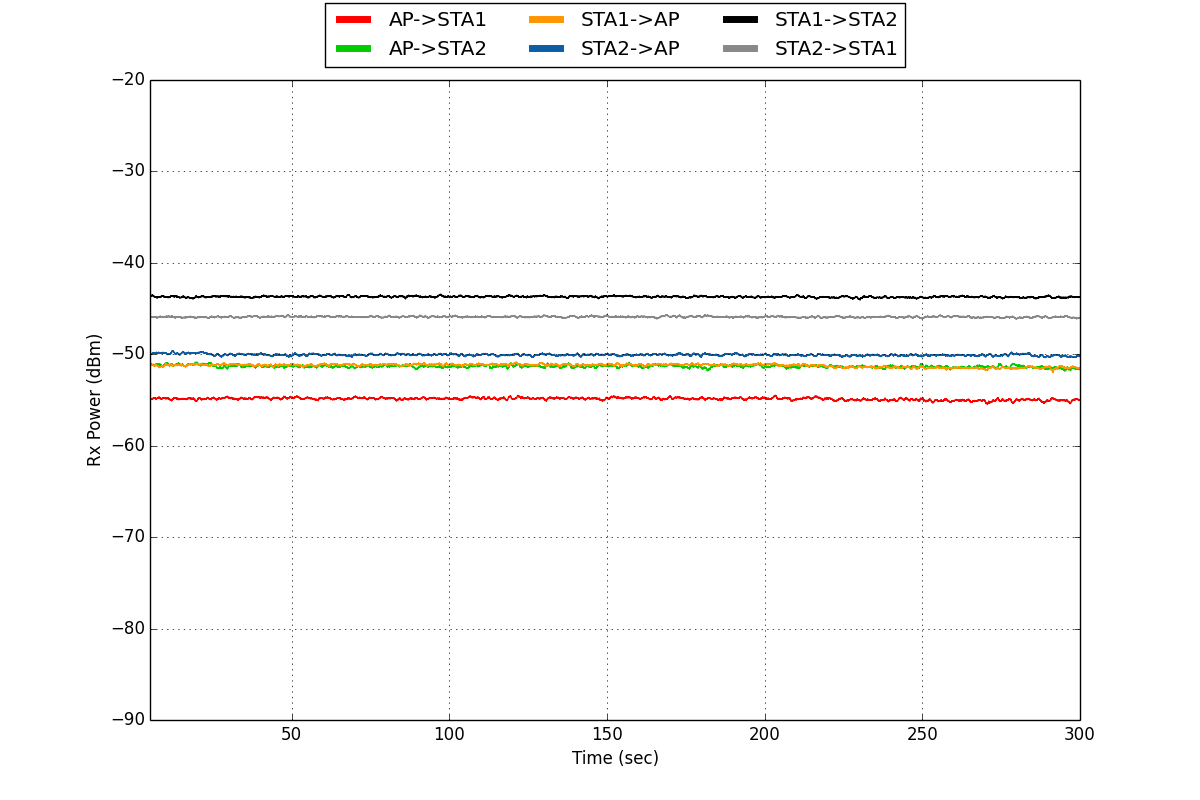
|
| Rx Power vs. Time
|
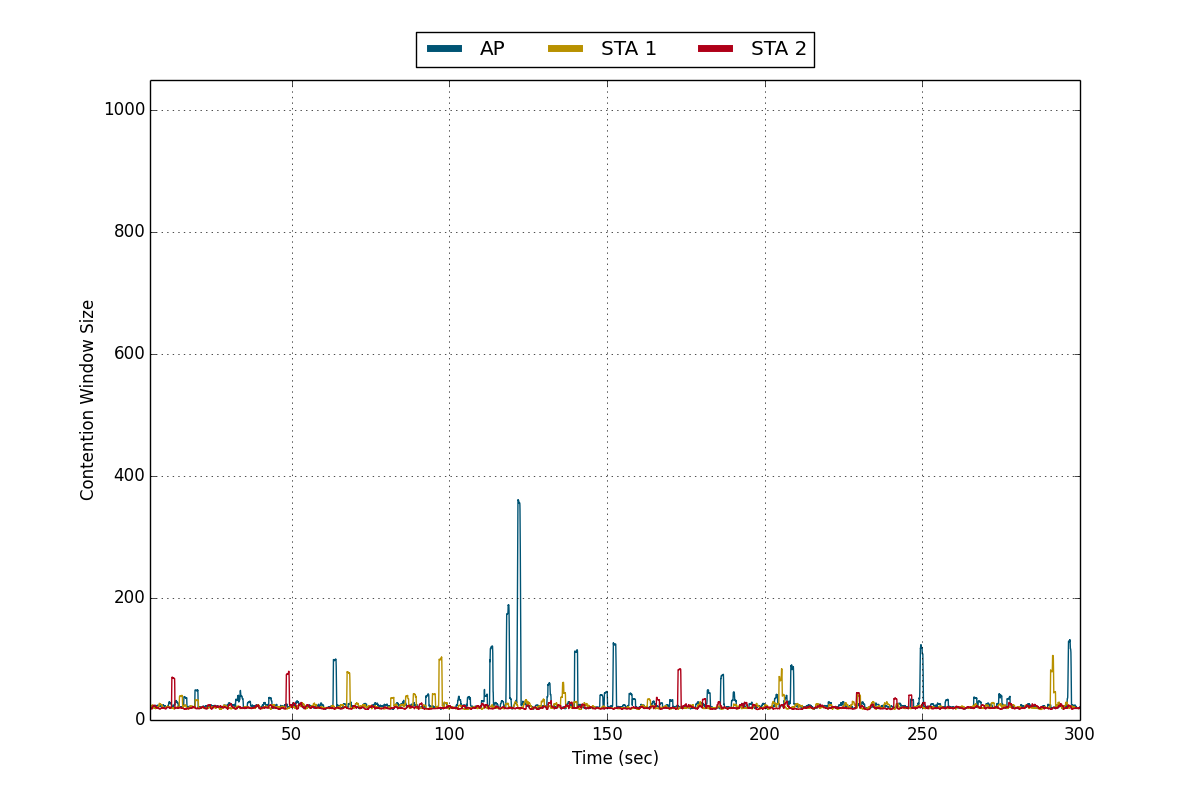
|
| Rx Power vs. Time
|
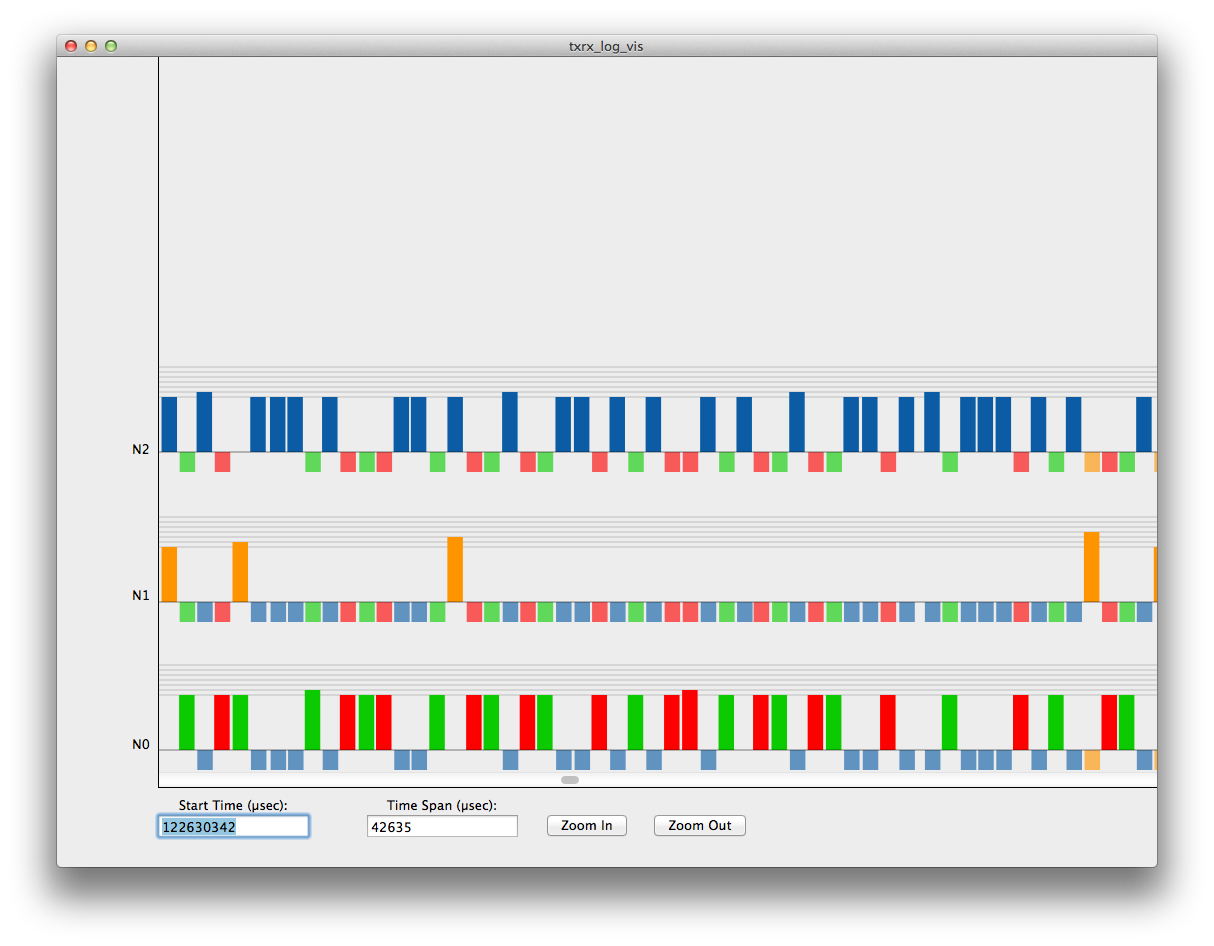 | 
|
| Collisions (Zoomed) | Collisions (1 second)
|
Experiment 2: Disabled Physical Carrier Sensing
Experiment Details
- Packet Length: 1400 byte payloads (1428 bytes OTA with MAC header and FCS)
- PHY Rate: 18 Mbps
- Tx Power: -5 dBm
- Trial Duration: 300 seconds
- Channel 1
- Physical Carrier Sensing Threshold: 1023/1023
Results
| Throughput vs. Time | Throughput Histogram
|
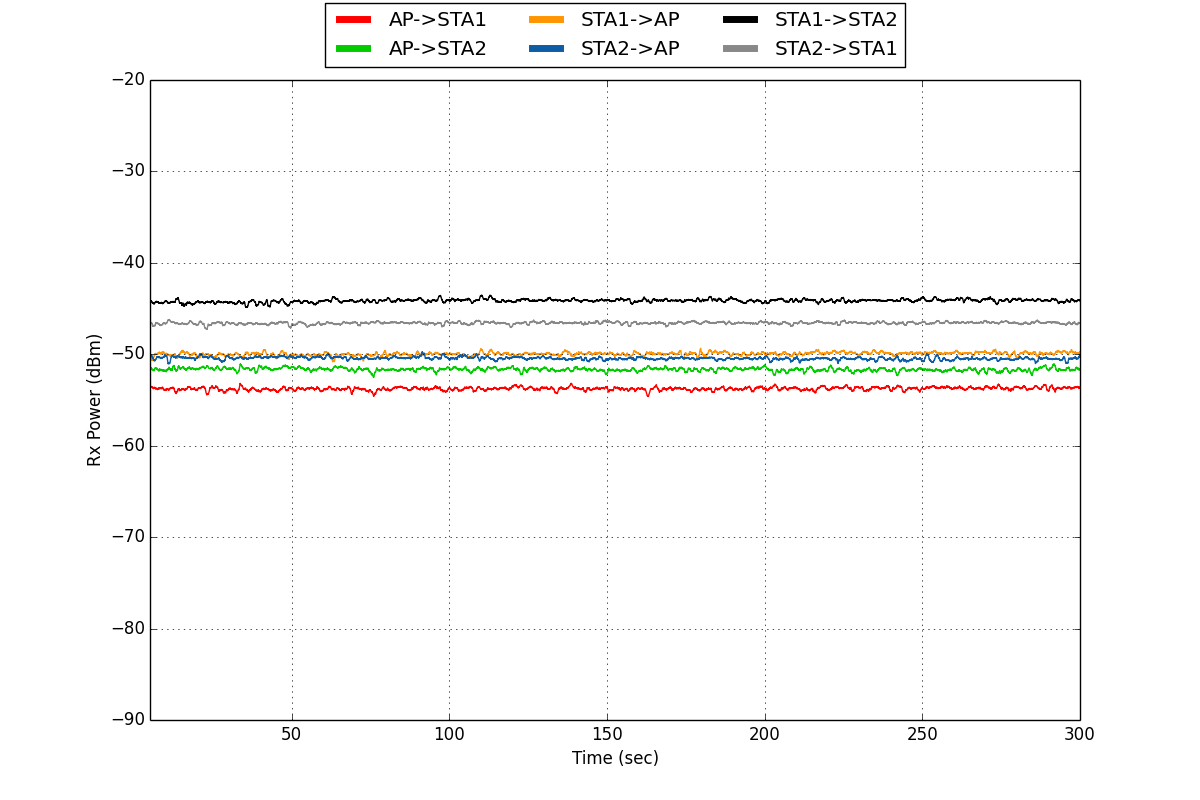
|
| Rx Power vs. Time
|

|
| Rx Power vs. Time
|
 | 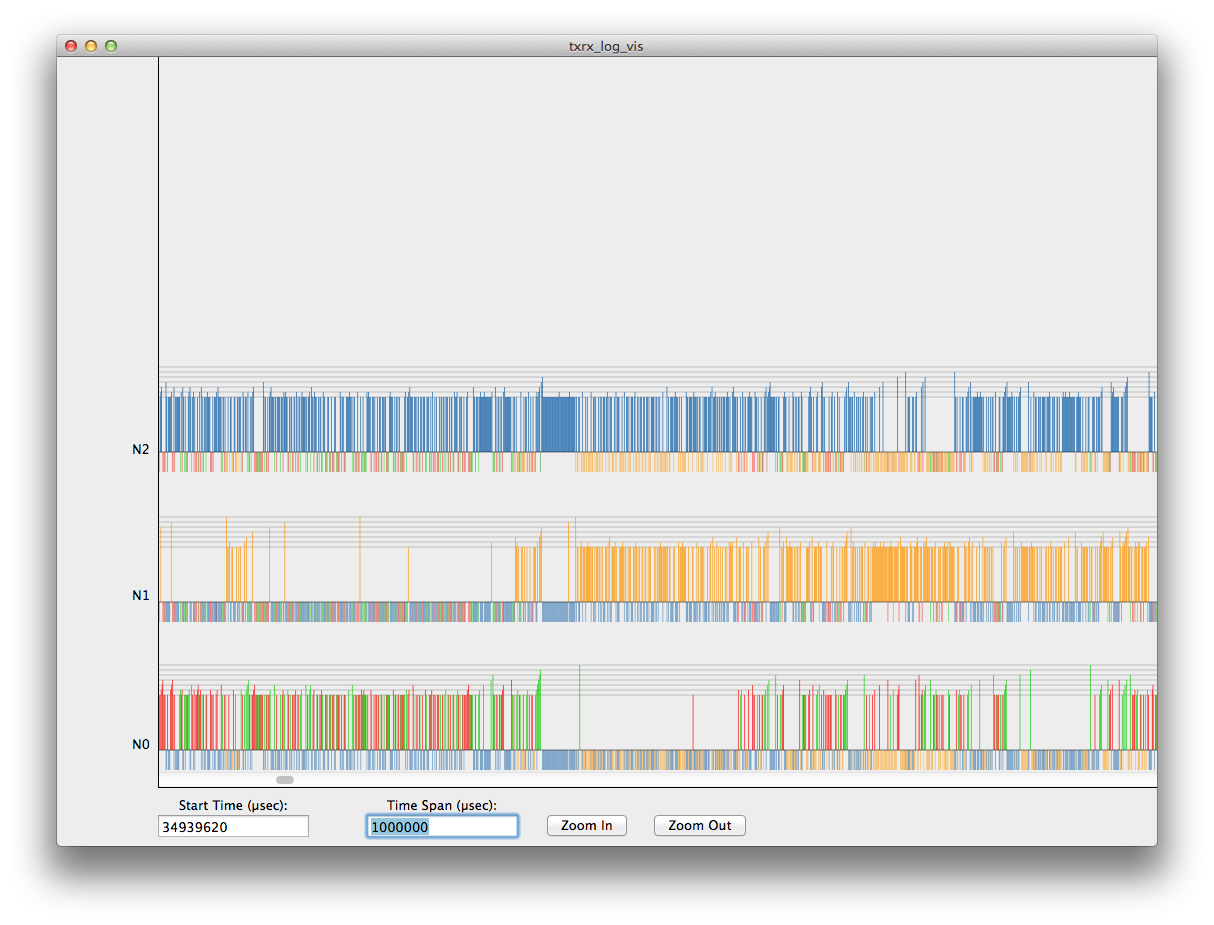
|
| Collisions (Zoomed) | Collisions (1 second)
|
Resources
Links to the data sets and experiment scripts used to perform this study will be posted shortly.


